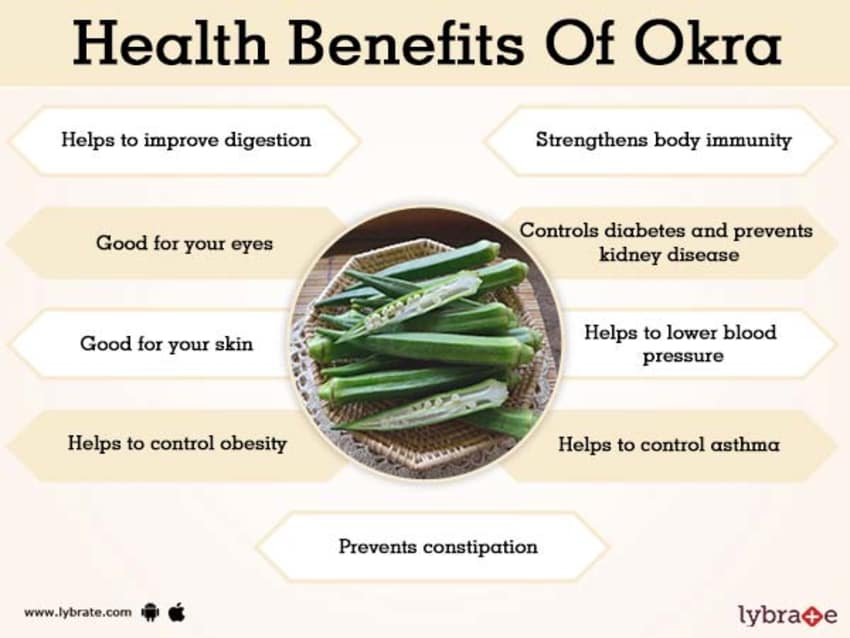
Frozen red okra can be stored indefinitely in airtight containers or freezer bags. It should last for about 4 to 5 days before it begins to lose its freshness. To store fresh red okra, remove the ends and place it in a plastic bag inside your refrigerator. Red okra offers a variety of benefits, but it is important to know how to store it. Red okra contains choline, which is an anti-ulcer compound that prevents stomach acid secretion. It also protects against ulcer formation by increasing the mucous secretion in gastric tissues. Okra is excellent for preventing stomach ulcers because it contains antiseptic and antioxidant properties that kill bacteria, which prevents damage to the lining of the stomach. Consuming red okra can prevent the development of both diseases. Okra helps fight macular degeneration and cataracts because it contains zeaxanthin and lutein, which are phytonutrients that protect the eyes from disease-causing free radicals. Red okra has high dietary fiber content that promotes healthy digestion and prevents constipation. This fruit has high water content to prevent dehydration, which can cause intestinal problems. Red okra possesses diuretic properties that help relieve constipation and other digestive problems. It also contains good amounts of antioxidants, such as quercetin that protect the body cells from damage by free radicals. Red okra is a good source of dietary fiber that lowers LDL (bad) cholesterol and increases HDL (good) cholesterol in the body. Okra is known to reduce cholesterol and triglyceride levels in the blood. It has diuretic properties that prevent excess fluid retention in the body and swelling of the joints. This plant is a good source of antioxidants that reduce oxidative stress in the body, which can lead to bone diseases such as osteoporosis. Red okra contains high amounts of calcium, phosphorus, and vitamin D, which are all essential for healthy bones. In addition, red okra works as a natural anti-aging agent because it contains vitamin C and antioxidants that help promote skin elasticity. This fruit also contains the essential fatty acid linoleic acid, which helps reduce inflammation of the skin caused by these conditions.

It is an excellent source of vitamin C and antioxidants that promote healthy skin cells. Skin conditions such as eczema, psoriasis, and acne can be treated with red okra. Red okra also prevents obesity by preventing triglyceride formation in the liver, which regulates blood glucose levels. It has diuretic properties that reduce water retention and bloating caused by excess fluids. Red okra can promote weight loss because it contains ursolic acid, which increases the breakdown of fat. It also contains a substance called nasunin in the fruit’s skin that helps prevent cancerous effects by scavenging free radicals. Red okra prevents cancer cell growth because it inhibits an enzyme called tyrosine kinase, which is known to cause tumor metastasis in pancreatic tissues in mice. In addition, red okra contains the ingredients apigenin and quercetin, which also have anti-inflammatory benefits. It also decreases the production of pro-inflammatory proteins, such as COX-2 enzymes and tumor necrosis factor-alpha (TNFa), which reduces inflammation in the body. Red okra contains a compound called ursolic acid that has anti-inflammatory properties. Red okra contains antioxidants, such as capsaicin and alkaloids that protect the body from cellular damage caused by free radicals. The red color of this plant is due to its anthocyanin and phenolic content, which also gives it antioxidant properties. Listed are some benefits of eating red okra: Antioxidant Benefits

Red okra has many nutritional benefits that make it an excellent health food. You can then cook red okra by boiling or frying into many of your favorite dishes and recipes! Nutritional Benefits Of Red Okra They simply cut off the ends, slit along one side, open it up and use a knife to scrape out the insides. The shape of red okra pods makes them particularly easy to handle and prepare. If you pull or twist off a whole pod that has yet to ripen, its insides will be white and unappetizing. The red fruit of the plant can be harvested when it’s tender, young, and “pops” back when you gently press on it with your fingertip. Its fruit, commonly called “lady’s fingers,” are green when immature and red when they become ripe at maturity. The okra plant produces beautiful yellow flowers with five petals and 10 leaves. Okra is a member of the mallow family and is native to Africa and India, but now grows throughout warm regions in Asia and the Americas.


 0 kommentar(er)
0 kommentar(er)
